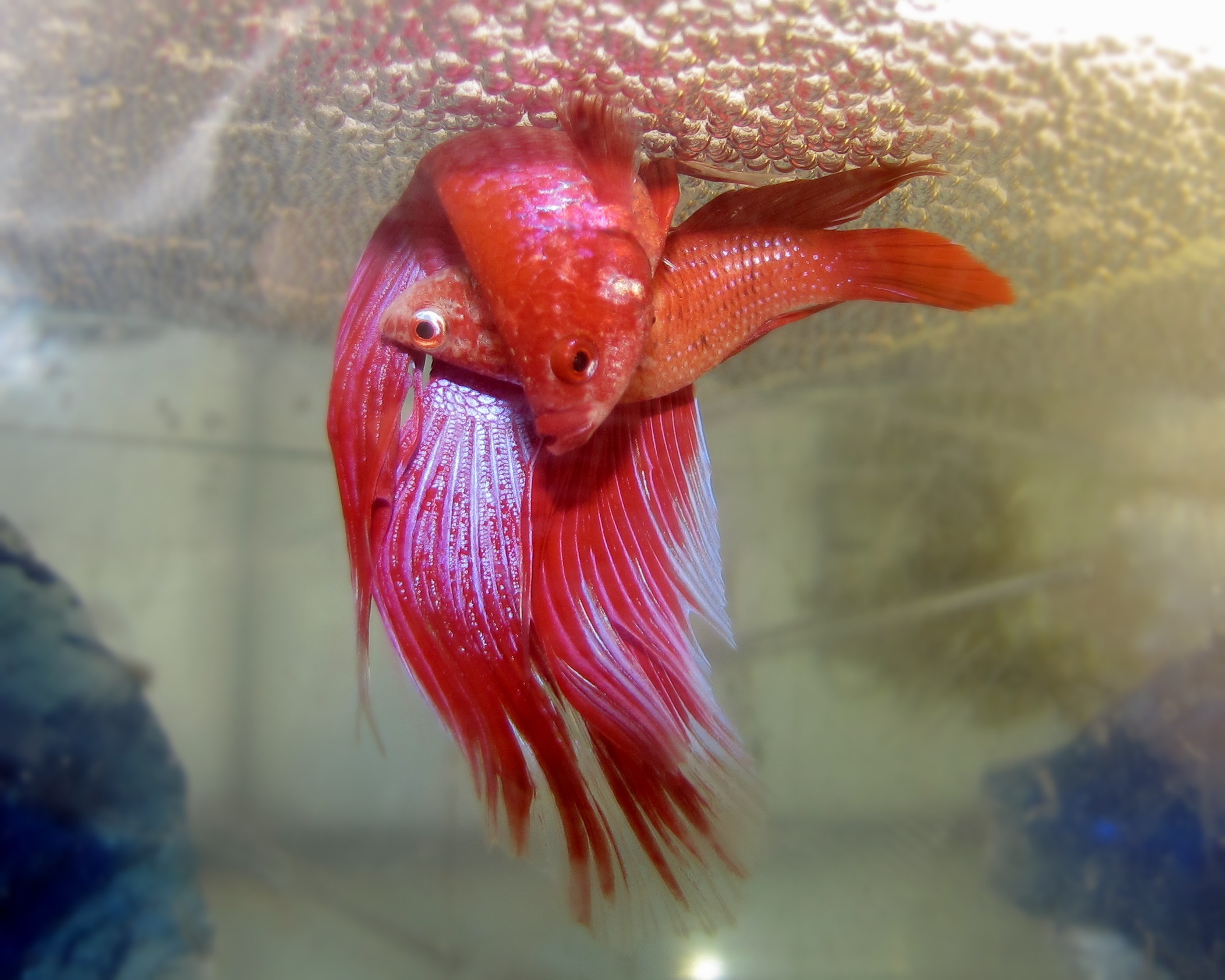Fish reproduce through a process called spawning. In most cases, fish have external fertilization, meaning the male releases sperm and the female releases eggs into the water, where fertilization occurs. However, the exact method can vary depending on the species. Here are a few common ways fish reproduce:
1. Broadcast spawning: This is the most common method in which fish release both eggs and sperm into the water simultaneously. The eggs and sperm then mix, leading to fertilization.
2. Nest building: Some fish, like Betta fish, build nests and engage in courtship behaviors before spawning. The male builds a bubble nest on the water’s surface, and the female lays eggs in the nest. The male then releases sperm to fertilize the eggs and guards the nest until the eggs hatch.
3. Internal fertilization: Certain species of fish, like sharks and rays, practice internal fertilization. The male inserts sperm directly into the female’s body through specialized reproductive organs.
It’s important to note that fish reproduction is diverse, and there are many unique methods and adaptations depending on the species.
Know More About: how do fish have sex
Title: The Fascinating World of Fish Reproduction: Unveiling the Secrets of Aquatic Love
Introduction:
In the diverse and enchanting realm of underwater life, fish stand out not only for their vibrant colors and intriguing behaviors but also for the astonishing ways in which they reproduce. Contrary to popular belief, fish are not exempt from experiencing the wonders of sexual reproduction. In this article, we will delve into the captivating mechanisms of fish sex, shedding light on the diverse reproductive strategies and complexities of aquatic courtship.
1. Pair Bonding and Monogamy:
Many fish species embrace the concept of pair bonding, establishing monogamous relationships that often last for an extended period or even their entire lifetimes. Penguins and angelfish are exemplary creatures known for their monogamous bonds. These devoted pairs engage in intimate dances and synchronized movements, reinforcing their connection and preparing for successful mating.
2. External Fertilization:
Unlike mammals, fish practice external fertilization. This means that fish release their eggs and sperm into the water, where fertilization takes place. To ensure successful reproduction, fish must synchronize their reproductive cycles, resulting in breathtaking displays of mass spawning events, such as those observed with the Pacific salmon.
3. Courtship Rituals:
To attract a mate, male fish resort to elaborate courtship rituals. This involves showcasing vibrant colors, intricate dances, and striking displays to entice potential partners. For instance, the extravagant dance of the betta fish, characterized by flaring fins and vibrant colors, captivates females and entices them to engage in spawning behavior.
4. Leaping into Love:
Some fish employ astonishing techniques to ensure their reproductive success. The flying fish, renowned for their aerodynamic abilities, undergoes a unique form of courtship by leaping out of the water and gliding through the air. Males use this technique to impress females, who scrutinize their aerial skills to determine suitable mates.
5. Hermaphroditism:
In the underwater world, there are various species of fish that possess both male and female reproductive organs, known as hermaphrodites. This fascinating adaptation allows them to avoid dependency on a specific mate while maximizing their reproductive potential. The clownfish, made famous by the movie “Finding Nemo,” showcases this intriguing reproductive strategy.
6. Nest Building:
Another fascinating aspect of fish reproduction is the process of nest building. Male fish, such as the Betta splendens, exhibit remarkable skills in constructing intricate nests, often made from bubbles or plant material collected from their environment. These shelters serve as a safe haven for the eggs and to attract female partners. The complexity and quality of nests play a significant role in determining a male’s desirability.
7. Brood Pouches:
Some species, like seahorses, pipefish, and sea dragons, take the concept of parental care to an entirely new level. It is the male, rather than the female, who carries the fertilized eggs. Within a specialized pouch, the male provides a nurturing environment, oxygenating the eggs and even controlling temperature and salinity to ensure their survival. This unique form of paternal care is truly extraordinary in the animal kingdom.
Conclusion:
Fish reproduction is an enchanting subject with a vast array of intricate mechanisms and fascinating strategies. From extravagant courtship rituals to external fertilization and incredible forms of parental care, fish exhibit an astonishing diversity of reproductive behaviors. Exploring the underwater world of fish sex enriches our understanding of the marvels of nature, highlighting the astounding complexity and ingenuity found in all corners of our planet.
FAQs on how do fish have sex
1. Q: How do fish reproduce?
A: Fish reproduce by laying eggs, which are fertilized externally by the male fish releasing sperm onto the eggs.
2. Q: Do fish have specific mating seasons?
A: Yes, many fish species have distinct reproductive seasons when their chances of successful reproduction are highest.
3. Q: How do fish attract mates?
A: Fish attract mates through various behaviors, such as displaying vibrant colors, performing courtship dances, or emitting pheromones.
4. Q: Is the process of fish reproduction similar in all fish species?
A: No, there are various methods of fish reproduction. While most fish lay eggs externally, some species give birth to live young.
5. Q: Do fish engage in copulation?
A: Unlike mammals, fish do not have copulatory organs. Instead, fertilization occurs externally, where the male releases sperm onto the eggs.
6. Q: How do fish recognize potential mates?
A: Fish can identify potential mates by using visual cues like color patterns or by recognizing specific mating behaviors of their own species.
7. Q: Can fish change their gender?
A: Yes, some fish species are capable of changing their gender, a phenomenon known as sequential hermaphroditism.
8. Q: Do fish form long-term bonds with their mates?
A: Although most fish do not form long-term bonds, some species do exhibit monogamous behaviors, where they mate with the same partner for extended periods.
9. Q: Can fish reproduce without a partner?
A: Yes, some fish can reproduce asexually through methods like parthenogenesis, where the females produce offspring without fertilization by a male.
10. Q: How many eggs do fish typically lay during reproduction?
A: The number of eggs laid by fish differs greatly among species. Some fish may lay only a few dozen eggs, while others can release thousands or even millions of eggs in a single reproductive cycle.

